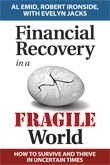Last updated: June 06 2012
Global uncertainties keep Bank of Canada rate at 1%
Checkmated once again by global economic events, the Bank of Canada kept the overnight rate at 1%, which would seem to indicate, despite pundits' earlier speculation, Canadians aren't going to see interest rates change anytime soon. And when they do change, the central bank has signaled, the direction will be upward, not downward.
"To the extent that the economic expansion continues and the current excess supply in the economy is gradually absorbed,î the Bank of Canada press release said, "some modest withdrawal of the present considerable monetary policy stimulus may become appropriate, consistent with achieving the 2% inflation target over the medium term.î
CIBC economist Avery Shenfeld put it another way in his recent comment: "Governor [Mark] Carney, and his team at the Bank of Canada, are not ready to throw in the towel on their reasonably optimistic outlook, or the resulting need to raise interest rates down the road. While conceding that the global picture is more troubling than it appeared back in April, in contrast to financial markets betting on a rate cut, the central bank made clear that it still sees its next policy change as a hike from the low 1% rate it chose to retain today.î
Certainly, Carney has guarded his language and hedged his bets. As this quarter indicates, the economic environment can change dramatically in a matter of months. As of April, Greece is back in the headlines and euro zone events have weighed on global economic health. Growth in China, Brazil and India has disappointed and economists worry about the "spillover effectî on the Canadian economy.
The domestic scene is also worrisome with GDP up by a mediocre 1.9% in the first quarter, as CIBC economist Emanuella Enenajor noted, "tracking last year's fourth-quarter pace.î Exports have indeed slowed measurably. But, adds Enenajor, "home-grown momentum also waned, with final domestic demand slowing to 1.3%, the fifth straight quarterly deceleration.î
On the bright side, noted the Bank of Canada, the Canadian economy continues to operate with "a small degree of excess capacityî with total CPI inflation falling below 2% and core inflation remaining around 2%. But the downside risks are piling up.
And in Canada there is that nagging, consistent worry about rising household debt in an environment in which growth in household income is moderate ó at best. The Bank of Canada noted the "slightly slower than expectedî growth in the first quarter and the stronger than expected housing activity. That supports the need for the withdrawal of monetary policy stimulus ó or higher rates.


